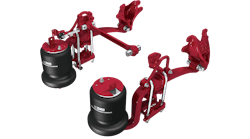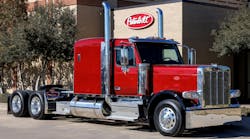The trucking industry has made great strides to improve safety and is now the safest it has ever been, but “we can do more,” the American Trucking Associations (ATA) told a subcommittee of the US Senate Committee on Commerce, Science, and Transportation recently.
“Improving motor carrier and highway safety is about understanding the behaviors that cause crashes and addressing the factors that raise crash risk,” said ATA Senior Vice-President Dave Osiecki said during the Surface Transportation and Merchant Marine Infrastructure, Safety, and Security Subcommittee hearing on Oversight of Motor Carrier Safety Efforts. “Future programs and government-issued rules will only succeed to the degree that they address crash risk and causation.”
Osiecki addressed several issues, including the Federal Motor Carrier Safety Administration’s (FMCSA) Comprehensive Safety Analysis 2010 (CSA 2010) program; federal hours-of-service (HOS) rules; FMCSA’s oversight of new carriers; and ATA’s recommendation to return to a national maximum speed limit of 65 miles per hour for all vehicles, outlined in its safety agenda.
He said ATA shares FMCSA’s goals for its CSA 2010 initiative, which is more sophisticated than the current safety scoring system, but the system can be improved. ATA has offered three specific recommendations to FMCSA to help better target carriers and drivers most in need of intervention:
1) Make crash accountability or “causation” determinations on truck-involved crashes before entering them into a carrier’s profile so drivers and carriers are held accountable for crashes they cause.
2) Use vehicle miles traveled, not number of trucks, as a carrier’s exposure measure.
3) Focus on using actual citations and not unadjusted “warnings” from law enforcement.
Osiecki told the subcommittee the current HOS rules are working and should be retained. However, the sleeper berth rule should be modified to allow for limited flexibility to encourage greater use of circadian-friendly naps, which promote safety and driver health. Federal safety data shows trucking industry safety performance has improved substantially since the current HOS rules took effect in 2004. The number of truck-involved crash injuries per 100 million miles has dropped 25% and the truck-involved fatality rate has dropped 22%. The fatal crash rate has dropped 66% since the DOT began keeping those records in 1975, and is now at its historical low.
ATA supports targeting companies that do not comply with HOS regulations with a remedial directive to use electronic logging devices, Osiecki said. The regulation requiring this is a good first step and will allow FMCSA and the industry to capture additional data on the benefits of the devices.
Osiecki also told the subcommittee that FMCSA should require new carriers to complete a safety training class, including an exam, before commencing operation. The initial safety audit conducted by FMCSA should also take place within six months of start-up, rather than 18 months as is required now.
To view Osiecki’s full testimony to the Senate subcommittee, visit www.truckline.com/Newsroom/Testimony1/Dave%20Osiecki%20Carrier%20Safety%20Testimony.pdf.








